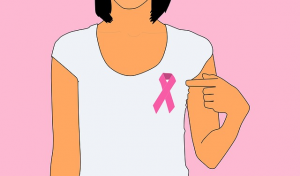
In many countries, breast cancer is the most commonly diagnosed and treated form of cancer. A 2014 meta-analysis of 16 studies has shown that there is a statistically significant association between serum selenium status and risk of breast cancer. The lower the serum selenium concentration, the greater the risk of breast cancer [Babaknejad].
What do we know about selenium and breast cancer?
Breast cancer is a frustrating topic for the selenium researcher. There is not enough evidence to permit definitive statements about the effects of selenium supplementation on the prevention of breast cancer.
For example, the Nutritional Prevention of Cancer (NPC) study – a study that showed significant associations between selenium supplementation and reduced risk of colorectal, lung, prostate, and total cancer – did not enroll enough women for the effect of selenium supplementation on breast cancer to be studied [Clark].
Evidence about selenium and breast cancer
Cancer cell line studies have shown that selenium yeast has beneficial effects on oxidative stress, tumor growth inhibition, and apoptosis in human breast cancer cells [Guo].
Cancer cell line studies have also shown that supplemental selenium and the anti-cancer chemotherapy drug cisplatin, combined, can result in a significant anti-breast cancer effect [Sakalli Çetin].
Animal studies have consistently shown that selenium supplementation helps to suppress the formation of breast cancer cells [Ekoue].
Most human epidemiological studies (reports of observational studies) have shown an inverse association between selenium status and intakes and the risk of breast cancer [Ekoue].
Dr. Cai and a team of researchers have done a meta-analysis of 69 observational studies of selenium exposure and cancer risk. 14 of the studies had breast cancer as an outcome. The data from the 14 studies show that higher selenium exposure was significantly associated with decreased risk of breast cancer [Cai].
Variations in selenoproteins and breast cancer incidence
Much of the current research on selenium and breast cancer focuses on the expression of important selenium containing selenoproteins and the risk of breast cancer.
This type of research seeks to establish an association between the different functional single nucleotide polymorphisms (SNPs) in the selenoproteins SEPP1, GPX1, and GPX4, for example, and the risk of breast cancer. The available data do show evidence of a role for selenoproteins in the inhibiting of the development of breast cancer [Méplan].
Polymorphisms in selenoproteins
Okay, single nucleotide polymorphisms? What are we talking about? Where to start?
Basically, the DNA sequences in genes provide the information that the cells need to make proteins. Genes coding for any one specific protein can have a number of differences in DNA sequencing within a population.
Polymorphisms are small variations in the DNA sequence of genes. Polymorphisms are common enough in populations that the differences they cause are not considered unusual in the way that mutations are considered unusual.
Single nucleotide polymorphisms (SNPs) are variations in a single base pair in a DNA sequence. And the interesting questions seem to be:
- Is there an association between SNPs producing selenoproteins and selenium status/selenium intake?
- Is there an association between SNPs producing selenoproteins and the risk/incidence of various cancers including breast cancer?
Wanted: a big intervention study of selenium supplementation and breast cancer incidence
Meanwhile, it would be good if someone would fund a big randomized, double-blind, placebo-controlled study of the effect of supplementation with a high-selenium yeast preparation on the prevention of breast cancer. Such studies are very expensive.
We don’t yet have conclusive proof that supplementation with an organic high-selenium yeast preparation reduces the risk of breast cancer, but there is certainly enough evidence from cell studies, animal studies, and observational studies to suggest that women with low selenium status will benefit from taking a selenium supplement. At the very least, it should be possible to have a selenium test done to see if one has low selenium status.
Sources
Babaknejad, N., Sayehmiri, F., Sayehmiri, K., Rahimifar, P., Bahrami, S., Delpesheh, A., & Alizadeh, S. (2014). The relationship between selenium levels and breast cancer: a systematic review and meta-analysis. Biological Trace Element Research, 159(1-3), 1-7.
Cai, X., Wang, C., Yu, W., Fan, W., Wang, S., Shen, N., & Wang, F. (2016). Selenium Exposure and Cancer Risk: an Updated Meta-analysis and Meta-regression. Scientific Reports, 619213. doi:10.1038/srep19213
Ekoue, D. N., Zaichick, S., Valyi-Nagy, K., Picklo, M., Lacher, C., Hoskins, K., & Diamond, A. M. (2017). Selenium levels in human breast carcinoma tissue are associated with a common polymorphism in the gene for SELENOP (Selenoprotein P). Journal of Trace Elements in Medicine and Biology, 39,227-233.
Guo, C., Hsia, S., Shih, M., Hsieh, F., & Chen, P. (2015). Effects of Selenium Yeast on Oxidative Stress, Growth Inhibition, and Apoptosis in Human Breast Cancer Cells. International Journal of Medical Sciences, 12(9), 748-758.
Méplan, C., Dragsted, L. O., Ravn-Haren, G., Tjønneland, A., Vogel, U., & Hesketh, J. (2013). Association between polymorphisms in glutathione peroxidase and selenoprotein P genes, glutathione peroxidase activity, HRT use and breast cancer risk. Plos One, 8(9), e73316. doi:10.1371/journal.pone.0073316
Sakalli Çetin, E., Nazıroğlu, M., Çiğ, B., Övey, İ. S., & Aslan Koşar, P. (2017). Selenium potentiates the anticancer effect of cisplatin against oxidative stress and calcium ion signaling-induced intracellular toxicity in MCF-7 breast cancer cells: involvement of the TRPV1 channel. Journal of Receptor And Signal Transduction Research, 37(1), 84-93.
Disclaimer: The information presented in this review article is not medical advice and is not intended for use as medical advice.
